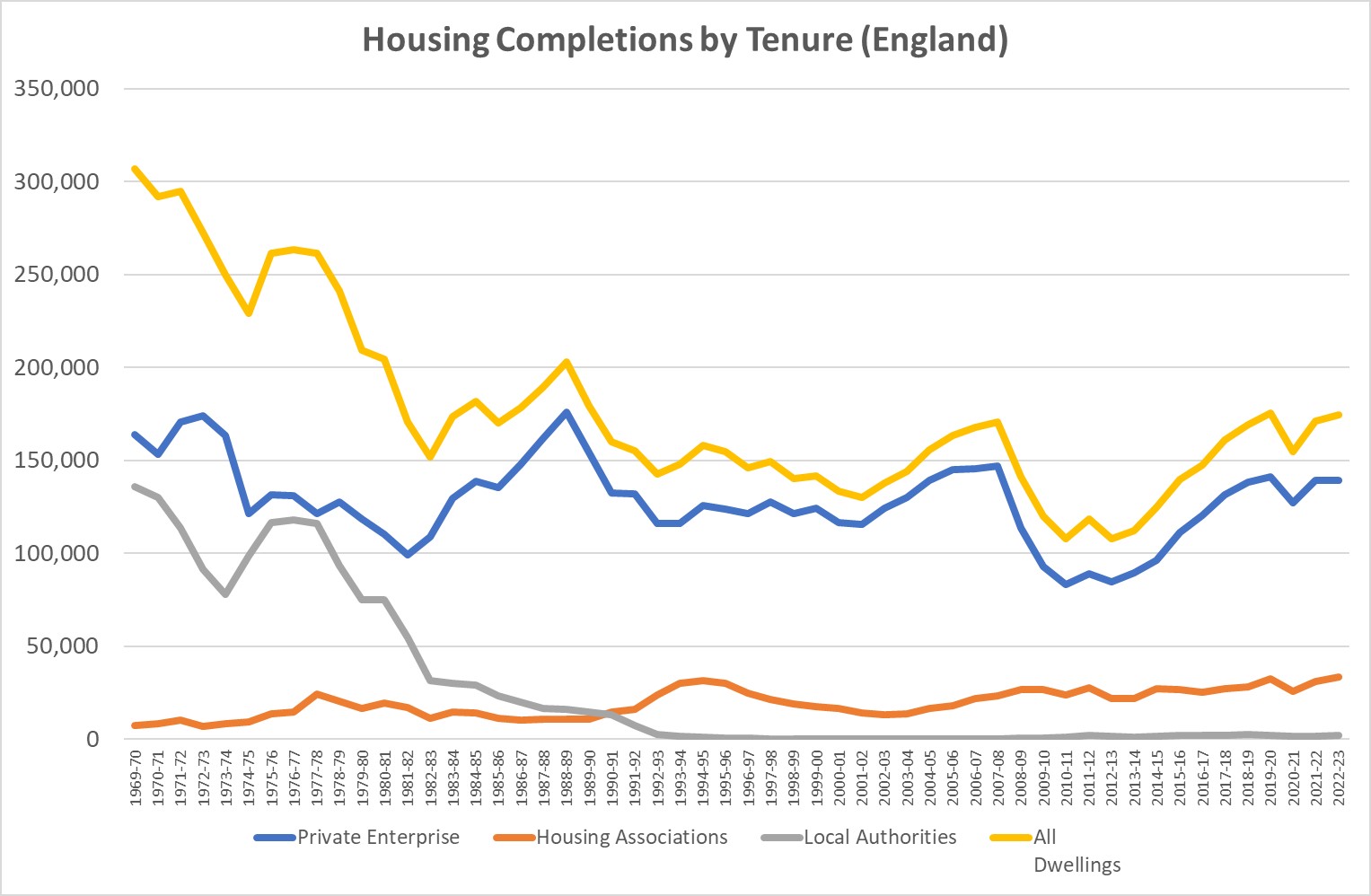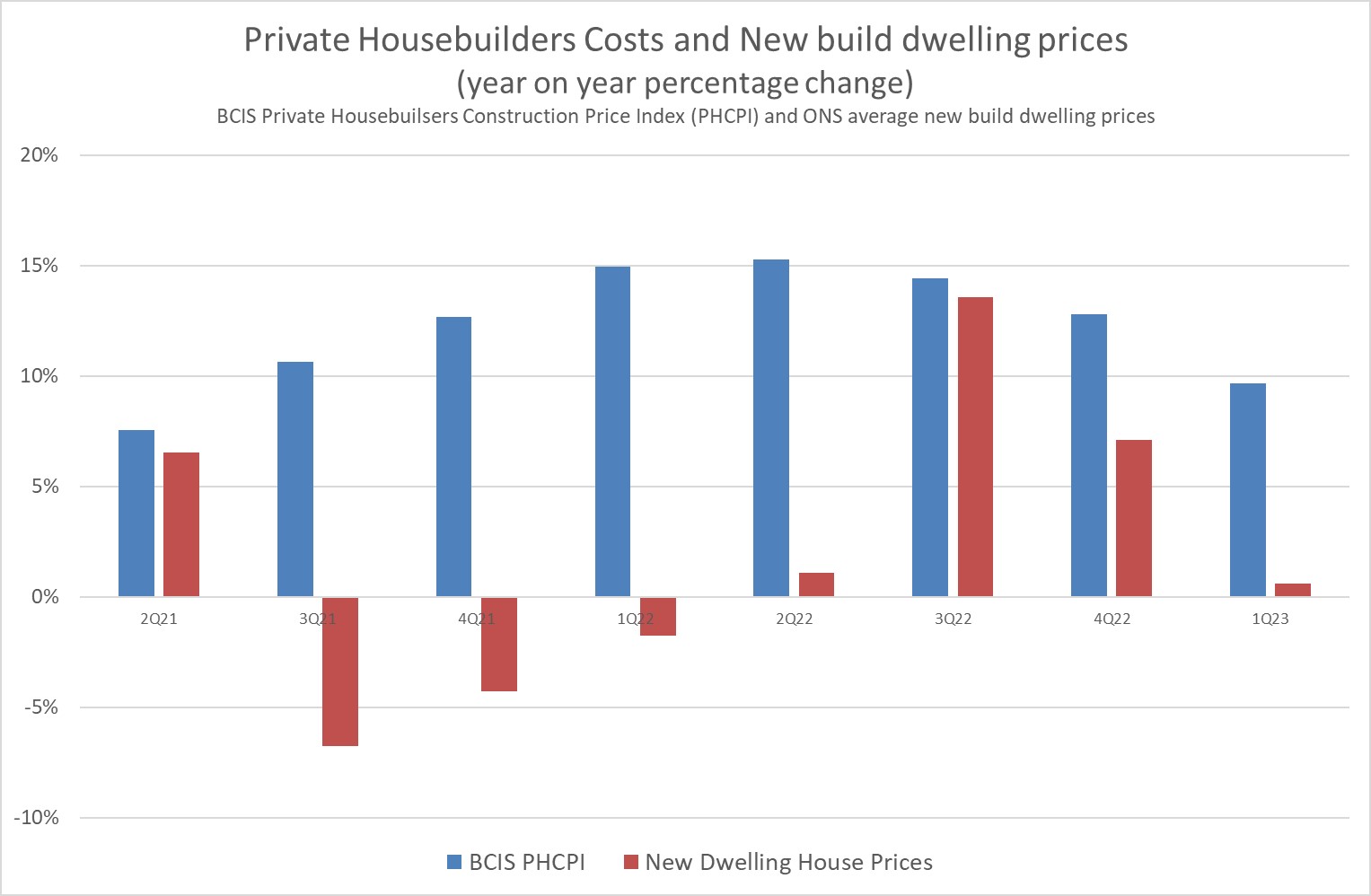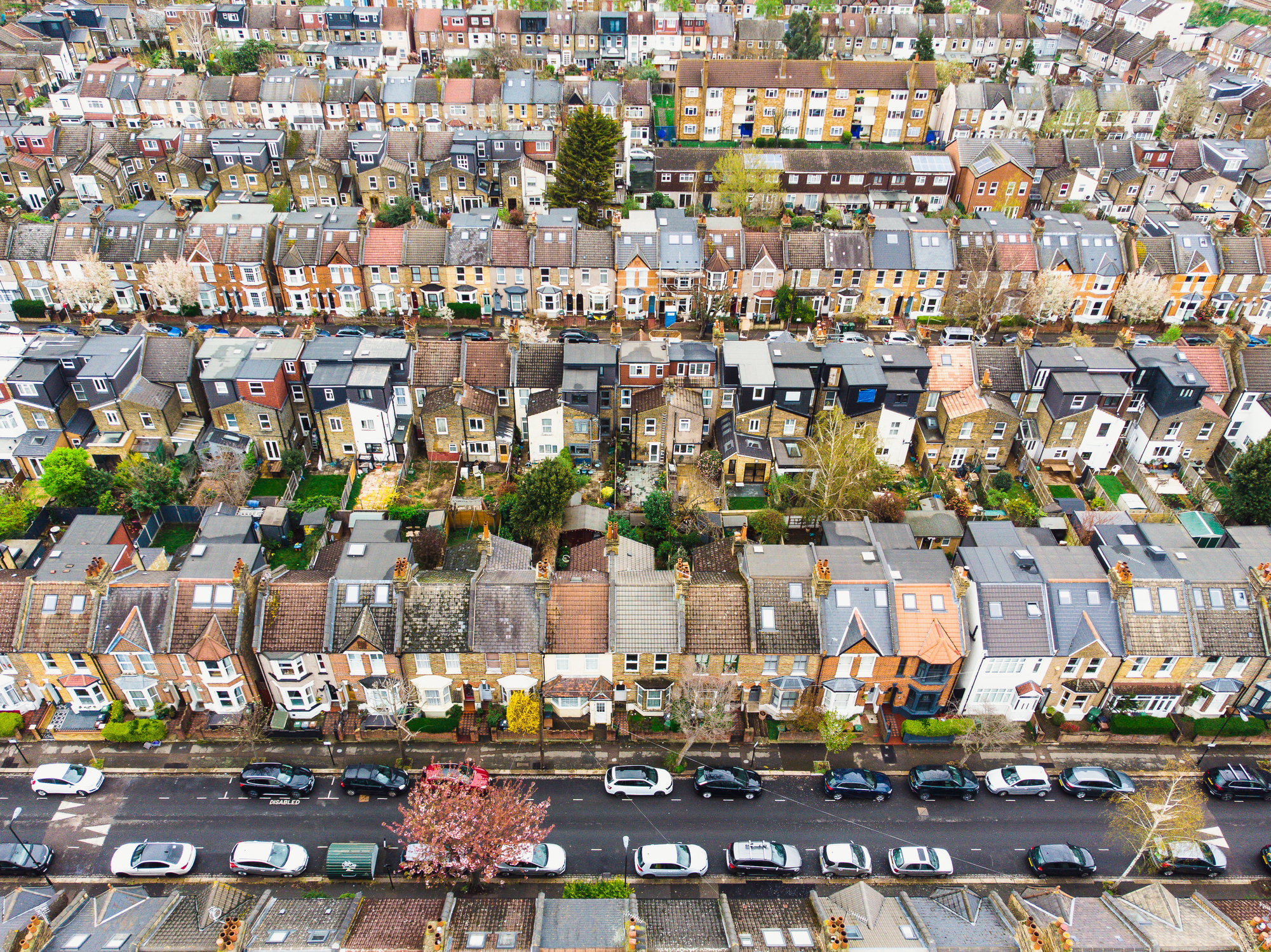With a target of 300,000 new homes a year needed to solve the housing crisis, Dr David Crosthwaite, chief economist at BCIS, takes a look at the government actions needed to deliver the challenging benchmark
There is a view that building 300,000 homes a year would improve the affordability of housing – despite the fact that the government has stepped away from this target since its manifesto in 2019.
In 2021-22 England produced 232,820 net additional dwellings. The average over the last ten years is 178,228, so somewhat short of the 300,000 target.
Approximately 90% of the net additions are new builds, so to meet the 300,000 housing target, we need to build 270,000 new homes (houses and flats per year) in order to tackle the housing crisis.
The last time we got anywhere near 270,000 was in the 1970s. Between 1969 and 1973, we built 290,000 per year – for the 1970s, over the entire decade, we built 260,000 per year.
Over the last ten years, we’ve built about 178,000 per year.
Housing supply has not changed to meet the demand
The significant thing about the figures for the 1970s is that while private housebuilders built 55% of the homes, local authorities built 40%, and housing associations built 5%.
In the last ten years, housebuilders built 81%, local authorities 1% and housing associations 18%. This decline was instigated by ending the right for local authorities to build houses.
The supply from housing associations (registered social landlords) has never replaced the local authority output. This problem was made clear in the Barker Report in 2004, which concluded that some form of public investment would be required to drive forward delivery.

The decision to stop local authorities from building, the right to buy policy and denying local authorities the opportunity to re-invest the receipts in housing were political decisions.
We’d argue that it’s politics, rather than economics, that could help us meet the 300,000 homes a year target.
As it stands, housebuilders won’t build them all, and the public sector can’t build enough to solve the housing crisis.
Housebuilders respond to the market
Housebuilders (developers) will only start development if they believe that they can sell the houses at a price that returns a development profit. They will only build out a development if there is an actual demand at that price, i.e., they can sell them.
Housebuilders’ share price goes up if they have undeveloped land. It goes down if they have unsold houses. This isn’t logical, but that is how the market operates.
Therefore, the private sector views housing demand solely as those who can afford to buy the houses that are available at a price that returns a profit. They also build for housing associations but require a contribution to their development profit.
There is a potential demand from those who are actively saving for a deposit for a mortgage or are otherwise in the process of raising funds. Housebuilders would undoubtedly wish to see this potential realised, which is why they’re keen on government initiatives, such as Help to Buy.
Another interesting change in housing delivery is the fall in the number of houses built by smaller contractors. According to the Federation of Master Builders (FMB), ‘Forty years ago SME house builders delivered 40% of our homes. Today the figure is just 12%.’
The factors that have contributed to this decline include the struggle to access finance and land, as well as navigating a complex planning system. Removing these barriers could provide another valuable resource for building new homes.
Can the public sector build enough to solve the housing crisis?
In 1969-70 the public sector built 142,800 dwellings. In 2022-23 it built 35,570 – the highest annual total since the mid 80s.
In 2012, the government agreed that receipts generated by additional sales resulting from the discount increases on right to buy could be used to either: fund replacement stock on a one-for-one basis nationally or allow local authorities to retain their own receipts from additional RTB sales, so that they could reinvest them in new affordable housing themselves.
As a result, local authorities have built around 2000 dwellings a year over the past 10 years compared with less than 200 a year in the preceding 10 years.
Now Michael Gove is promising to build 30,000 social homes a year.
Housing Association funding is a complex system with many competing factors. They build houses for a range of tenures, social rent, affordable rent, shared ownership and market sale.
Funding for new build affordable housing (social rent and affordable rent) is provided via the Affordable Homes Programme (AHP).
The AHP for 2021-26 is worth £11.5bn and includes a commitment to delivering homes using modern methods of construction (MMC).
The AHP plans to deliver up to 180,000 new homes over the next 5 years, including:
- 50% of homes at a discounted rent, including affordable rent and social rent in areas of high affordability challenge.
- 50% of affordable home ownership, including a majority of shared ownership.
Of these: - 10% of homes to provide supported housing.
- 10% of homes are in rural areas.
- 25% of homes are delivered through Strategic Partnerships using MMC.
In London, funding is administered by the Greater London Authority via the £4bn allocation for their Homes for Londoners programme.
A recent report by the Joseph Rowntree Foundationiii concluded that an additional 700,000 social properties could allow the level of social renting among lower-income families with children to return to its 1979 level.
It also concluded that reversing the decline in housing subsidies is key to enhancing the affordability of housing for renters.
The impact of construction costs on viability
The cost of building dwellings has been rising faster than the sales price over the past two years. This puts the viability of private development schemes at risk.

This will also affect the number of dwellings that housing associations can build on their fixed budgets.
Increasing levels of safety and energy-saving regulations will also add to the cost. A recent BCIS survey showed that implementing the recent changes to the Building Regulations – due to come into force in 2025 to ensure homes are ‘net zero’ ready – will add 5% to the cost of construction.
There have been various attempts to reduce the cost of constructing dwellings, not always to good effect such as making them smaller.
There have been increases in productivity as new materials have simplified the work in some trades, including plastic pipes for copper for plumbing and the introduction of pre manufacture components such as door and window sets.
In the main off-site construction such as advanced panel systems and modular construction haven’t been successful.
The Government still seems to believe in off-site construction and it may be that a large enough guaranteed pipeline of housebuilding might give off-site construction the market volume it needs but it is unlikely to drastically reduce the cost of building a house.
What can be done to tackle the housing crisis?
Given the state of the economy and the housing market, real demand for houses will continue to fall this year. It’s unlikely that it will start to rise until the economy recovers.
To get anywhere near the 300,000 target will require political will and government intervention.
Funding help to buy schemes would boost the demand and supply of houses from the private sector.
Local authorities could be allowed or, better still, incentivised to start building council houses to meet the need for houses from their population. These could be funded by allowing the authorities to borrow or by building some houses for sale on their developments.
Allowing local authorities to identify the demand and the location of the supply may ease planning constraints.
The government could develop its own land and employ builders to build rather than selling it to allow developers to develop. Aside from benefiting from the sales, they could use these to produce houses for rent.
Without some form of direct investment, 300,000 homes per year will remain a chimera.
Dr David Crosthwaite
Chief economist
BCIS

















